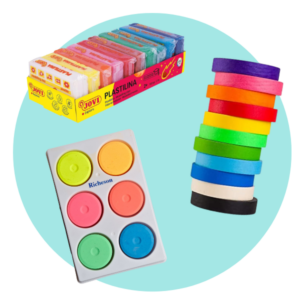There’s a reason some grandparents get greeted with a slow shuffle and a polite “hi,” while others can barely make it through the door before little arms are wrapped tight around their legs.
It isn’t luck. And it isn’t about how many toys they buy. It’s about the way they show up.
I’ve watched my own kids with their grandparents, and I’ve also seen what works in other families. When a grandparent leans in with genuine presence, patience, and warmth, kids don’t just notice—they remember.
And that memory becomes body-deep: it’s why they bolt across the living room or the backyard to wrap their grandparents in a hug.
So what’s behind it? Let’s dig in.
1) They give their full attention
You know that feeling when someone really listens to you—no phone in hand, no eyes darting toward the TV, no half-nods while they multitask? Kids crave that even more than we do.
The grandparents who spark those joy-filled reunions are the ones who crouch down, look kids in the eye, and ask about the drawing, the toy car, or the story about preschool. And they don’t just nod—they follow up with questions that show they actually care.
Kids aren’t fooled by fake attention. They know when someone is “uh-huh”-ing them versus when someone is genuinely tuned in. When a grandparent makes a child feel like the most important person in the room, that bond deepens fast.
2) They keep traditions alive (even the tiny ones)
Do your kids light up when grandma bakes her “famous” muffins, even if they come straight from a boxed mix? Or when grandpa always does the same silly knock-knock joke at bedtime?
Rituals, no matter how small, give kids a sense of security and joy. The predictability becomes a comfort blanket. As Dr. Bruce Feiler, author of The Secrets of Happy Families, has noted, “The single most important thing you can do for your family may be the simplest of all: develop strong family narratives.”
That doesn’t mean you need big holiday productions (though those help too). It could be a shared walk to the corner store, a made-up song during bath time, or a special handshake. These small traditions become the glue that makes grandkids race to keep them going.
Related Stories from The Artful Parent
- My kids couldn’t entertain themselves without screens, until we rediscovered these 6 old-fashioned activities
- 7 phrases lower-middle-class parents use to instill resilience and courage in their children
- I constantly felt like I was failing as a mother, until I start doing these 7 things every day after work
3) They respect boundaries set by parents
Nothing sours a parent-grandparent relationship faster than disregard for boundaries. Whether it’s sneaking extra candy, ignoring bedtime rules, or undermining a discipline choice, kids feel the confusion—and parents feel the frustration.
The nurturing grandparents, though? They show respect. They check in, ask, and adapt. That creates trust all around.
And here’s the bonus: when kids see their parents and grandparents in sync, they feel safe. They know there’s a team looking out for them. That safety net is part of what makes them fling themselves into a hug—because they know they’ll land in arms that understand both love and limits.
4) They tell stories that connect generations
What kid doesn’t love a story? Especially when it’s about “when Mom was your age” or “back when I had to walk to school in the snow”?
Grandparents who weave stories into everyday moments do more than entertain. They give kids a sense of belonging in something bigger than themselves. They hand down history, resilience, and identity.
I’ll never forget the way my daughter’s eyes widened when her grandma told her about the time she accidentally dyed her hair green with a bottle of food coloring. To my four-year-old, it was magic: suddenly, grandma wasn’t just the keeper of bedtime hugs—she was a kid once too.
- 7 things daughters of loving mothers always carry with them - Global English Editing
- You know you had a difficult childhood when these 9 “normal” things still feel foreign to you - Global English Editing
- Retirees who stay physically fit without going to the gym always practice these 8 simple habits - Global English Editing
Stories shrink the gap between generations, and they leave kids eager for more.
5) They show patience in a way parents sometimes can’t
Let’s be honest—parents are often in a rush. Dinner to cook, laundry to switch, emails to answer. Even when we try, we can’t always linger as long as our kids would like on block towers or pretend tea parties.
Grandparents, though, have a superpower: unhurried presence. They can let a child explain the rules to a made-up game without interrupting. They can watch a child tie a shoe for the fifteenth time and cheer like it’s the Olympics.
This patience makes kids feel valued. As one child psychologist, Dr. Laura Markham, has said, “Patience is the art of communicating love.” And kids pick up on that. They feel it in their bones, which is why they sprint toward the grandparents who never make them feel like a burden.
6) They delight in who the child is—not who they “should” be
There’s a subtle difference between praising a kid for achievements and genuinely delighting in their existence.
Grandparents who give unconditional joy—whether the child scores a soccer goal or just spent twenty minutes stacking Legos—send a powerful message: you are enough just as you are.
When my toddler runs to her grandpa holding a scribbled drawing, he doesn’t critique the colors or ask, “What is it supposed to be?” He gasps like it’s a Picasso and pins it to the fridge. That affirmation fuels confidence and makes the bond magnetic.
Kids run to the people who celebrate their quirks and passions, not just their polished moments.
7) They make goodbyes and reunions special
It’s not just the hug in the doorway—it’s the ritual around coming and going that strengthens the pull.
Some grandparents have a signature send-off: a wave at the window, a silly song in the driveway, or a whispered “see you soon.” Those routines bookend visits with love. They make the return hug feel like coming back to something sacred.
Even a simple ritual—like slipping a little note into a backpack or handing over a piece of candy with a wink—creates anticipation. Kids come to associate being with that grandparent as a place where love is wrapped in small but unforgettable gestures.
Final thoughts
When kids run to hug their grandparents, it’s about more than affection. It’s about trust, safety, delight, and memories.
The grandparents who get those joyful sprints aren’t necessarily the ones with the biggest houses or the fanciest gifts. They’re the ones who show up consistently, respect boundaries, and weave love into everyday routines.
And maybe that’s the real takeaway for all of us parents too. We don’t need to dazzle our kids with perfection. We need to be present, patient, and genuinely delighted in who they are. The hugs will follow.










